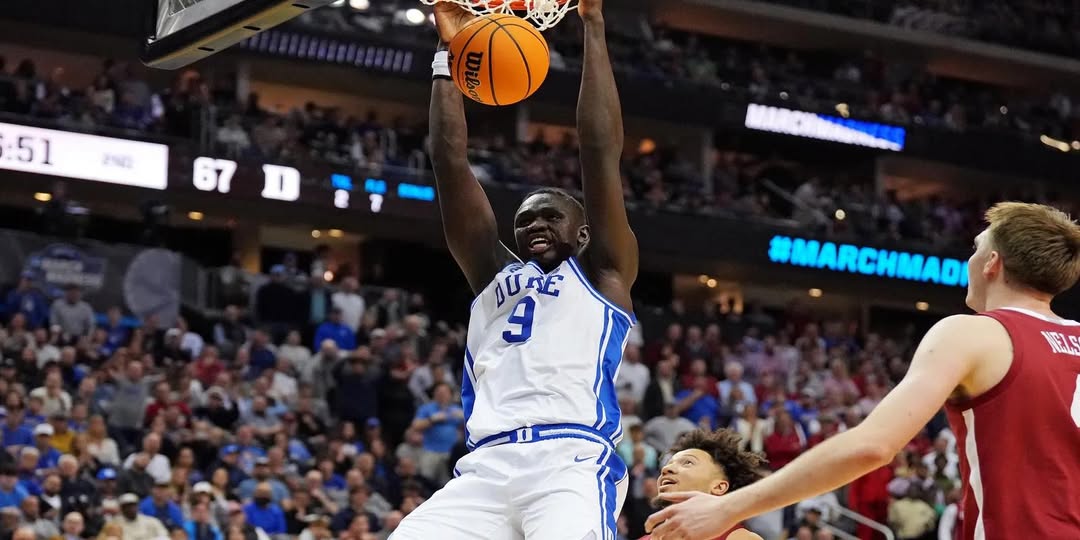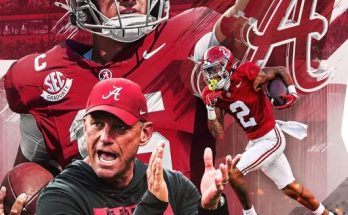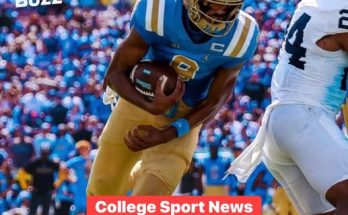Khaman Maluach had until 11:59 p.m. on Saturday night to declare for the 2025 NBA Draft, and as the college basketball world held its collective breath, the Duke men’s basketball center was faced with one of the biggest decisions of his young life. For weeks, speculation swirled around the 7-foot-2 prospect, who had been weighing the allure of NBA stardom against the potential benefits of returning to Durham for another season. The moment wasn’t just about a formality or paperwork; it represented the culmination of years of work, the turning point in a journey that began far from the glittering arenas of March Madness.
Maluach, the South Sudanese phenom who burst onto the college scene as one of the most talked-about international recruits in recent memory, has become a symbol of promise at Duke. A cornerstone of Jon Scheyer’s vision for the program, Maluach blended elite length, raw athleticism, and an evolving skill set that captivated scouts and analysts alike. But despite the attention and the accolades, his decision wasn’t as simple as many thought it would be.
The NBA’s early entry deadline is typically a checkpoint that separates the confident pros from the contemplative returners. For someone like Maluach, who stands on the edge of both categories, it’s a deeply personal crossroads. Throughout his freshman campaign at Duke, he showed flashes of brilliance—dominant rebounding stretches, game-altering rim protection, and soft touch around the basket—but he also showed signs of youth, of someone still learning the pace and rhythm of high-level competition.
Maluach’s situation is unique in many ways. Born in 2006, he’s barely old enough to be draft-eligible. He was playing in the NBA Academy Africa just a few short years ago, and the leap to the American college basketball scene was massive. Yet, in true Duke fashion, he acclimated quickly. His impact on the Blue Devils was felt beyond the box score. He gave the team an interior presence they’d been lacking and became a fan favorite, not just for his towering dunks or timely blocks, but for his humility, energy, and work ethic.
The NBA is always hungry for size and potential, and Maluach checks both boxes emphatically. Scouts have likened his ceiling to that of Clint Capela or even a young Serge Ibaka—players who anchored defenses and altered games without needing to dominate the ball. But the league is also filled with cautionary tales: talented bigs who jumped too soon, landed in the wrong system, or simply weren’t ready for the grind.
For Maluach, the draft isn’t just a golden ticket—it’s a gauntlet. Teams see the upside, yes, but they also want to know what he’ll look like two, three, or five years down the road. Will he stretch his game to the perimeter? Can he defend in space? Is he a long-term starter or a rotational gamble? These are the questions NBA front offices ask, and for a player as young as Maluach, the answers are still forming.
Back in Durham, the coaching staff at Duke has made their stance clear: they’d love to have him back. Scheyer has spoken glowingly about the freshman’s development and the role he could play on next season’s team. With Cooper Flagg, the top prospect in the nation, already committed and returning, and a stellar incoming class featuring the likes of Isaiah Evans and Kon Knueppel, the Blue Devils are once again poised to contend for a national title. Having Maluach return would anchor their defense and solidify their frontcourt, giving them one of the most imposing lineups in college basketball.
From a development standpoint, there’s a compelling argument to be made for staying. Another year under Scheyer’s guidance, with more minutes, more experience, and the chance to compete for a championship, could elevate Maluach’s draft stock into the lottery range. As it stands, most mock drafts have him projected late first round or early second—respectable, but far from a sure thing in terms of guaranteed money or opportunity.
There’s also the NIL factor. In the modern college basketball landscape, elite players no longer face the same financial pressure to go pro. Maluach, playing at a school like Duke with its massive national brand and strong alumni base, could earn significant compensation simply by returning. In years past, prospects like him might have had no choice. But now, the calculus is different. Staying another season doesn’t mean sacrificing your future—it might actually enhance it.
Still, the NBA remains the dream. For Maluach, who’s been on scouts’ radars since he was 15, the idea of playing under the brightest lights, competing against the best in the world, and representing his country on the biggest stage is tantalizing. He’s not just playing for himself—he’s playing for a generation of kids in South Sudan who look up to him as proof that anything is possible. A first-round selection, or even a high second-round nod, could be life-changing, both for him and for his family.
As the clock ticked down toward the deadline, the tension grew. Fans flooded social media, insiders whispered about meetings and workouts, and analysts debated what his decision would mean for the upcoming draft class. Some claimed he was leaning toward leaving, citing private workouts and recent agency meetings. Others argued he was torn, pointing to his close ties with teammates and his affection for the Duke community.
What makes Maluach’s case particularly fascinating is that he doesn’t fit the traditional mold of a one-and-done star. He’s not an offensive juggernaut like Zion Williamson or Paolo Banchero. His game is subtler—defensive rotations, altered shots, screens, and rim runs. But in a league that increasingly values rim protection and vertical spacing, he offers something essential.
And yet, essential doesn’t always mean ready. NBA coaches have limited time to develop projects, especially bigs. If Maluach enters the draft and lands in the wrong spot, he could find himself buried on the bench or bounced between the G League and the big club. Returning to Duke gives him guaranteed reps, national exposure, and the chance to refine his body and skills.
Over the past few months, he’s been observed putting in extra time at the gym, working closely with Duke’s strength and conditioning coaches, and meeting with mentors and advisors. By all accounts, he’s taken the process seriously. He’s not chasing fame or hype—he’s focused on what’s best for his career long-term.
It’s also worth noting the impact of Cooper Flagg’s decision to stay. Flagg, who could have taken his talents elsewhere or pursued pro options overseas, chose to return to Duke. His commitment to running it back has helped set a tone for the program: unfinished business. For a team that fell short in the NCAA Tournament, the hunger is real. Maluach could be a central figure in that redemption story, and the opportunity to grow alongside Flagg and Knueppel could be invaluable.



